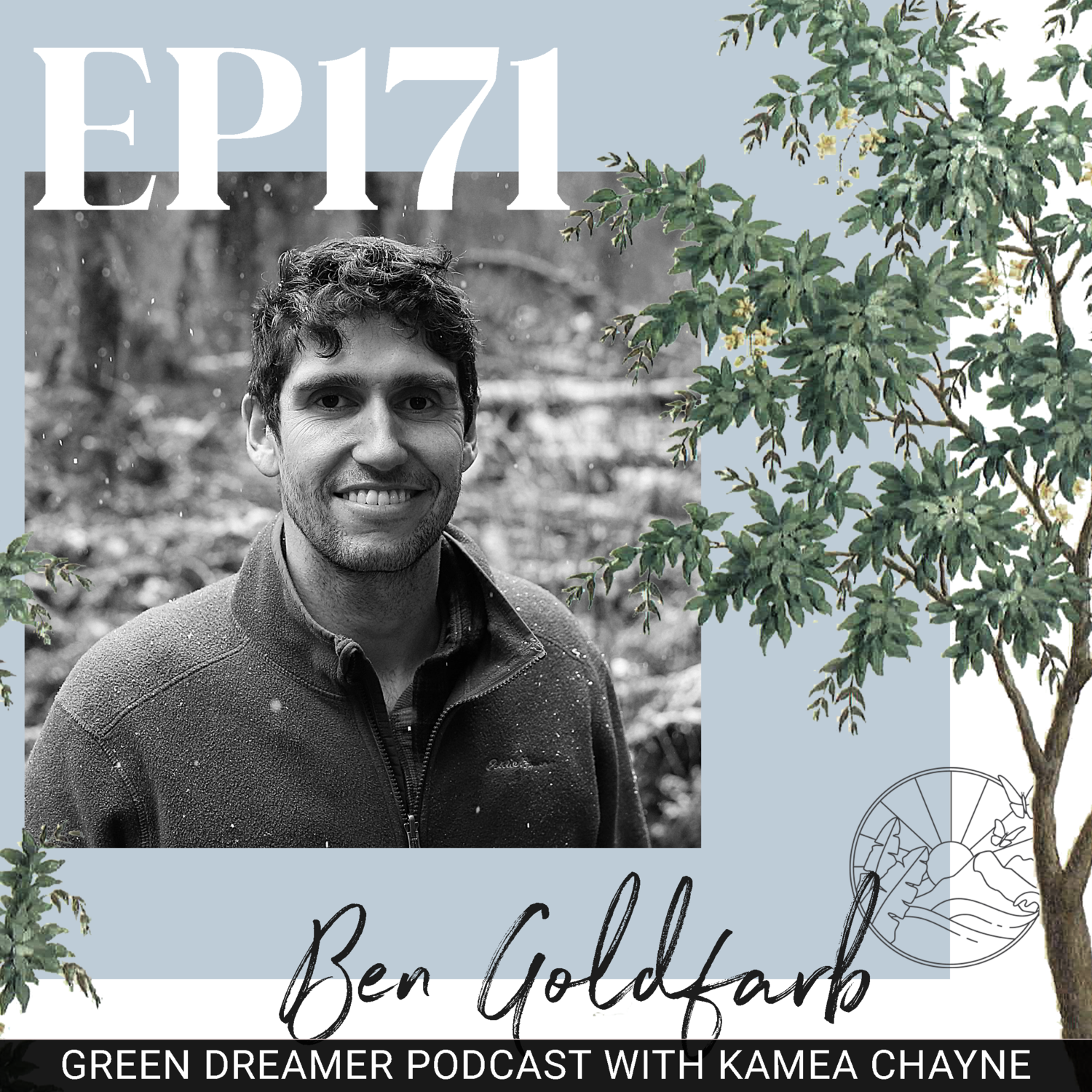The vital role of beavers in enriching and strengthening our ecosystems (interview with ben goldfarb of eager)
Ben Goldfarb (@ben_a_goldfarb) is an independent environmental journalist and the author of Eager: The Surprising, Secret Life of Beavers and Why They Matter, a winner of the 2019 PEN/E.O. Wilson Literary Science Writing Award. His work on the vital role that beavers play in our ecosystems and current research on road ecology has appeared in National Geographic, Outside Magazine, Science, Mother Jones, The Guardian, and many other notable publications.
In this podcast episode, Ben sheds light on how we've wiped out 99% of our beavers in North America; the vital role that beavers play in enriching wild landscapes and building our collective resilience against climate change; why our modern ideas of what healthy ecosystems look like may have been wrong; and more.
To start, get a glimpse below into the conversation between Ben and Green Dreamer Podcast's host, Kamea Chayne.
“The beaver story is really about the hidden ecological changes that have transformed North America; it’s about these rodents that were hugely responsible for shaping the landscape that we occupy.”
If you feel inspired by this episode, please consider donating a gift of support of any amount today!
This is a conversation on Green Dreamer with Kamea Chayne, a podcast and multimedia journal illuminating our paths towards ecological balance, intersectional sustainability, and true abundance and wellness for all. This preview has been edited for clarity. Subscribe to Green Dreamer Podcast on iTunes, Spotify, Stitcher, or any podcast app to stay informed and updated on our latest episodes.
On how the fur trade impacted beaver populations:
"By and large, the dominant factor in the destruction of beavers was the fur trade, and that was mostly for hats.
Beavers have layers under their fur which the trappers called beaver wool. Those little under-hairs have little hooks or barbs at the end which make them lock together like velcro, creating a durable, malleable, and waterproof hat-making felt material that was used to make these hats that were all the rage in Europe.
It was really the hat industry, more than anything else, that drove the initial collapse of beaver populations."
On the beaver trade's influence on American history:
"A lot of the historical events that shaped post-colonial North America were motivated by the beaver trade.
For example, during the time of the American Revolution, one of the British decisions that angered the colonists and eventually incited them to revolt was when the British denied colonists access to beaver trapping grounds west of the Appalachian Mountains.
The Louisiana Purchase was partly motivated by Thomas Jefferson's desire to secure new trapping lands. It was primarily white fur trappers and traders that spread smallpox and many of the other diseases that nearly wiped out many of the Native American tribes.
The story of the beaver trade is the story of post-colonial America in its grandiosity and tragedy."
On how beavers have shaped the North American landscape:
"The beaver story is really about the hidden ecological changes that have transformed North America. It's about these rodents that were hugely responsible for shaping the landscape that we occupy.
The destruction of those rodents is also hugely consequential in reshaping that landscape. Now that they're coming back, that's having a new suite of impacts.
The ways in which the beavers and the fur trade shaped our continent are largely invisible to us."
Final words of wisdom:
"I'm so heartened by all of the inspiring, passionate, and motivated people out there that are trying to heal our planet.
Don't lose hope and keep fighting the good fight. Thank you for all the work that you do."

